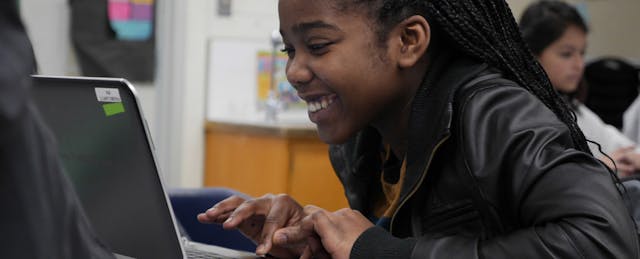You couldn’t miss the biggest tech news stories of the last year, all revolving around the industry’s dismal workforce diversity. Google, LinkedIn, Yahoo!, and many other tech companies acknowledged the lack of diversity among their employees. Many followed up with a pledge to improve. For good reason.
While tech companies can do a lot more when it comes to improving culture, one thing is clear: there aren’t enough women or students of color studying computer science in the first place. It’s difficult to increase diversity in the workplace when hiring from a pipeline that is dominated by white and Asian males.
The time to address this issue is before college, or before even high school. The reason to do so isn’t just to improve diversity in the tech industry, but rather, to prepare all children for a future that’s increasingly impacted by technology.
Kids are on games, apps and social networks all day long. Most of them jump at the chance to learn more about what goes into the technology that impacts every part of their lives, but – even in 2015 – the majority of K-12 schools in the United States don’t teach computer science. Starting there, we can begin to turn the diversity problem around.
Teach Computer Science in Ways that Students Love
Millions of students have tried computer science for the first time with the Hour of Code movement. More importantly, countless teachers have shared that their school’s Hour of Code turned into a week of code, month of code or a full regular course. Students are saying, “I don’t want to watch a movie. Can I code instead?” or asking, “Can we do this every week?”
It’s no accident that Code.org’s own tutorials feature Angry Birds, Plants vs. Zombies and Anna and Elsa from Frozen. The fact is, it’s a lot more fun for students to learn how to build the things they love, in an interactive way, than to learn traditional subjects covered in schools.
While creating technology with code, students also exercise the other skills they learn in math, English or science, but with instant feedback and accomplishment: an encouraging nudge to keep learning.
Teach computer science in all schools, starting early and with a focus on equity
There isn’t a single career that won’t be disrupted by technology by 2030. So, it’s not unrealistic to ask every school to prepare children with a basic understanding of how technology works.
To make the best career opportunities available to talent of all backgrounds, we need to do more to integrate computer science into K-12 schools, where the playing field is still relatively level.
By high school or college, it’s probably too late for many kids. The year before last, not one female student took the Advanced Placement Computer Science exam in Mississippi or in Montana. In 11 states, not one black student took the test. In eight states, no Hispanic students.
We are Changing the Face of Computer Science
Code.org has partnered with all seven of the top seven largest public school distrcits in the United States to expand access to computer science in middle and high schools, introducing inclusive courses that cover how technology relates to everyday life. With participating districts spanning from New York City to Chicago to Los Angeles to Miami, female students make up a much-improved 34 percent of in-school classes. 60 percent of students are black or Hispanic.
Ten percent of all US students have enrolled in Code.org’s introductory courses for early learners 15 months since its launch. Nearly half of enrolled students are girls. 37 percent are black and Hispanic.
Of course, most of these students won’t become software engineers, but you never know what you might be passionate about if you don’t have the chance to try it when you’re young
Keep in mind, efforts like recruiting new students with a group of their friends, avoiding male-focused projects or stereotypically nerdy classroom decor, and highlighting diverse role models and broader career applications can go a long way in appealing to new students who might not think computer science is for them.
The faces of coding and computer science are changing. Among our youngest students, today there are currently over two million girls learning to code — far more than in the entire history of computers. By bringing computer science into schools and highlighting more diverse role models, we’re on the right track. Maybe an African American girl in 3rd grade will be the next Mark Zuckerberg, who’s just finding her calling today.


